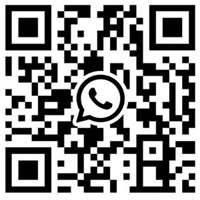The Low-Temperature Bending Resistance Tester is a specialized laboratory instrument designed to eva
WhatsApp : +86 13816217984
Email : info@qinsun-lab.com

The Low-Temperature Bending Resistance Tester is a specialized device that simulates the repeated bending of materials or products in low-temperature environments. By controlling the temperature, bending angle, and frequency, it evaluates their mechanical properties and durability under extremely cold conditions. The device utilizes a fully enclosed compressor for precise temperature control, with a temperature range typically covering room temperature down to -70℃ and a temperature control accuracy of ±0.3℃. Core components such as the clamps and inner chamber are made of stainless steel to ensure stability during long-term low-temperature operation. Some models are equipped with a color LCD touch screen, supporting real-time setting and display of parameters such as test temperature, time, and curves, and also integrate multiple safety devices such as overload protection and over-temperature alarms.
Cold Flexibility Testing (ISO 4674-2/ASTM D1790):
Samples are bent 10.000–50.000 times at -40°C to simulate polar or alpine conditions.
Results are graded based on crack appearance:
Pass: No visible cracks or coating separation.
Fail: Cracks exceeding 0.5 mm in width.
The tester adheres to international standards for material testing at low temperatures, including:
ISO 4674-2 (Rubber- or plastics-coated fabrics – Determination of low-temperature bend test)
ASTM D1790 (Standard test method for resistance of organic coatings to the effects of rapid deformation (impact))
GB/T 2423 (China’s national standard for environmental testing – Cold tests)
EN 60068-2-1 (Environmental testing – Cold tests for electronic components)
SAE J2339 (Cold temperature impact resistance for automotive coatings)
These standards ensure consistent evaluation of material behavior under thermal and mechanical stress.
1. Material Cold Resistance Testing
This test simulates the dynamic bending process of materials such as rubber, plastics, leather, and synthetic fibers in low-temperature environments to detect their resistance to embrittlement and cracking. For example, by setting a -20°C environment, a shoe sole material can be subjected to 25.000 bending cycles to observe crack length and delamination, verifying whether it meets the standards for use in cold regions.
2. Product Reliability Verification
This involves evaluating the structural integrity of finished products such as shoes, automotive seals, and electronic device casings at low temperatures. For example, testing the deformation of a smartphone casing after 1000 bending cycles in a -10°C environment ensures the product can withstand extremely cold climates.
3. Research and Development and Quality Control
In the new material development stage, the bending performance of different formulations at low temperatures is compared to optimize material selection; in the production process, products are regularly sampled to ensure batch consistency and reduce after-sales complaints.
| Parameter | Specification |
|---|---|
| Temperature Range | -70°C to +200°C (adjustable via cryogenic cooling) |
| Bending Angle | 0–180° (adjustable for different material flex requirements) |
| Stroke Frequency | 50–300 cycles/min (programmable) |
| Sample Dimensions | 100 × 20 mm (standard for coatings/films); up to 300 × 50 mm (customizable) |
| Cooling System | Liquid nitrogen or mechanical refrigeration (LC-120 model) |
| Control System | PLC-based with 7-inch touchscreen (multilingual interface) |
| Power Supply | 220V/50Hz, 800W |
| Dimensions | 800 × 600 × 1500 mm (L × W × H) |
Standard accessories:Basic bending fixture (suitable for standard test specimens, such as 70×45mm leather/material test pieces, conforming to standards such as QB/T 2714), laser cutting die for test specimens (corresponding to standard test specimen dimensions, such as 70×65mm), temperature sensor (such as PT-100. for temperature monitoring inside the low-temperature chamber), operation manual, certificate of conformity, warranty card, power cord and basic connectors, LED lighting device inside the chamber, sealed door hinges (such as SUS 304 material).
Optional accessories:Finished shoe bending fixture (suitable for whole shoe testing, such as SATRA TM92 standard), sole ROSS flexural fixture (such as SATRA TM60 standard, bending angle 90°), 3-point bending fixture (suitable for metal/composite materials, conforming to ASTM D790 and other standards), multi-position fixture for low-temperature chamber (e.g., 12 sets of leather flexural fixtures), temperature calibration component (improves temperature control accuracy), data acquisition software (links with the testing machine to record test data), spare sealing door gasket, sample fixing clips
Check the refrigerant pressure monthly (e.g., the normal value for R404A refrigerant in low-temperature conditions should be 1.2-1.5 MPa). Clean the condenser fins quarterly to prevent dust accumulation from affecting heat exchange efficiency.
After each test, run the automatic defrosting program to melt the frost layer using electric heating wires and drain the condensed water; before placing samples, ensure there is no condensation on the surface and wipe with a lint-free cloth dampened with isopropanol.
Regularly inspect potential leak points such as door seals and process pipe joints to ensure the equipment's airtightness; maintain a maintenance log to record key parameters (such as refrigerant pressure and temperature/humidity fluctuations) to provide data support for continuous optimization.
Qinsun Instruments Co., LTD is a professional laboratory testing instrument manufacturer in China,Have been focusing on laboratory instrument R&D more than 30 years and have rich industry experience,Based on international testing standards,We are also the instrument supplier for BV SGS laboratory,We provide one-stop solutions for lab instruments,Free Training and Turn-Key Service,Products exported all over the world,Offer 36 month warranty and are a trustworthy partner.
Company Phone
+86-21-6420 0566
Working hours
Monday to Friday
Mobile phone:
13816217984
Email:
info@qinsun-lab.com
